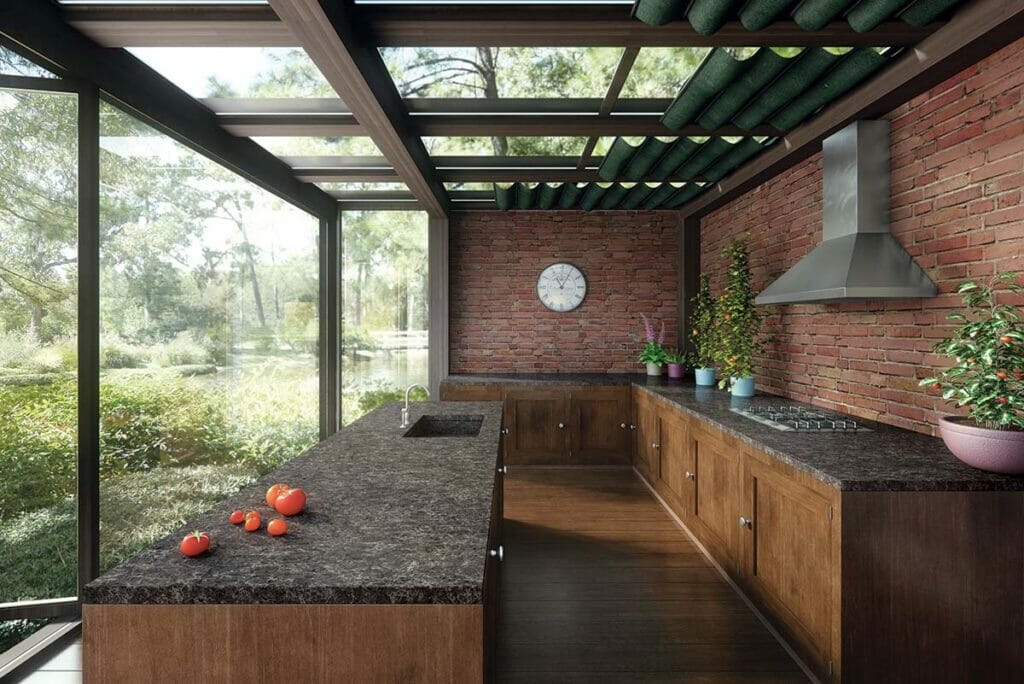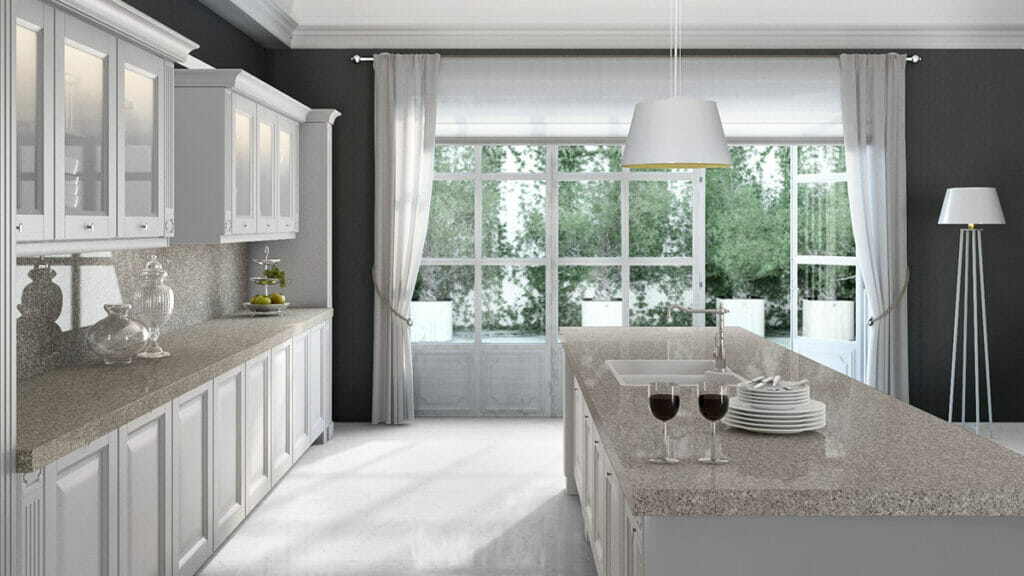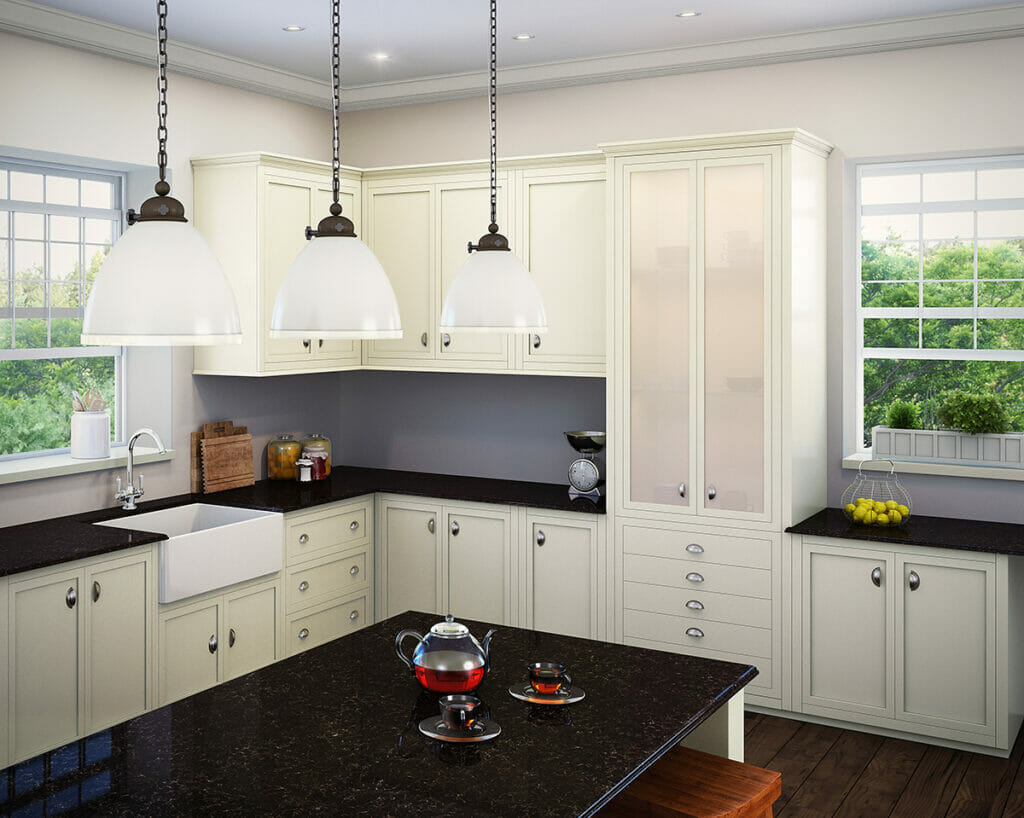How to Reseal Granite Countertops
6 min read

In the world of countertops, granite is considered a premium option. It requires very little maintenance and is quite durable. However, when looking to maintain its stain resistance, some maintenance is required from time to time to reseal the material.
In its natural state, granite is porous and absorbs liquids easily, therefore it needs to be sealed to make it stain-resistant. A sealant will create a barrier to prevent liquids and foods from absorbing into the countertop.
To avoid this type of regular maintenance, homeowners can opt for a countertop material like Caesarstone quartz, which is not only durable and low maintenance, but also doesn’t require sealing. For those looking for a premium quartz option that resembles granite, Caesarstone offers a variety of colors, such as 6003 Coastal Grey or 6270 Atlantic Salt.
The primary reason to learn how to reseal granite countertops is to keep them from becoming stained. Granite is mostly made of feldspar, mica, and quartz. While it’s a very strong and durable material, things such as cooking oil, pizza grease, and even red wine can soak into it, leaving behind unsightly stains. If the countertops are properly and regularly sealed, then there’s no need to worry.
Typically, granite should be resealed every 12 to 18 months. Nevertheless, there are some other factors that come into play when determining how often to reseal granite countertops. For example, a lighter colored granite will need to be resealed more often because it is typically more porous. Another factor that comes into play is acidic spills and cleaners. An acidic cleaning solution is not only tough on stains. it is also tough on countertops and degrades the sealant much faster. Finally, food prep zones may need attention more often than areas used to serve food.
To keep granite looking premium and stain-free, resealing is absolutely necessary. If the original sealant has been broken down, the granite countertop can end up as a porous material that easily absorbs stains. Even when cleaning up a spill quickly, the damage can be done almost immediately if the countertop is not protected. If there are granite countertops in the bathroom, the moisture in the air can get into the unsealed stone and leave watermarks. These marks will make the stone look dirty regardless of how often it’s cleaned.
Below, we will outline a 9-step process for resealing granite countertops. It’s not that difficult but it will require a sufficient amount of time to get it done, and help from a professional may be necessary.
The very first thing to do is determine if resealing is necessary at this time. To do this, wet a paper towel, place it on the counter, and leave it for about 10 minutes. If the granite darkens, it’s time to reseal the countertops. If the water beads up on the surface, there’s no need to move forward at this time. Repeat this test from time to time to know how often to reseal your granite countertops.
Another way to test whether granite countertops need to be resealed is with the lemon juice test. To do this, apply a few drops of lemon juice to the granite. If dark spots appear within about a minute, call in a professional to deal with it; this is not something a homeowner will be equipped to handle alone. On the other hand, if it takes five minutes or more for the surface to darken, then it’s fine to move forward with the DIY sealing process. If 30 minutes pass and the stone does not darken under the beads of lemon juice, there’s no need to seal the granite yet.

An important part of knowing how to reseal granite countertops is making sure that the sealant chosen is designed for natural stone. The carbon resin sealants can be expensive but in exchange they do provide the best results. The next best options are siloxane and silane sealants but they don’t repel oil as well. Take care to avoid silicone and linseed-based sealers because they can cause degradation to the color of the granite and it will need to be reapplied more often.
It’s not a good idea to apply the sealant to a dirty surface, so take care to use an appropriate cleaner and make sure the countertops are thoroughly clean. Then use a degreaser and denatured alcohol on the surface. Finally, allow the granite to dry for 24 hours before moving onto the next step.
Now that it’s time to apply the sealant, open a window for ventilation and put on a pair of gloves to protect any exposed skin. Before applying the sealant to the entire countertop, test it in an inconspicuous area to make sure that there won’t be a hazy residue or any discoloration. If the results are unsatisfactory, try a different sealant.
Once it’s been determined that the sealant will not ruin the countertop, it’s time to apply it to the entire counter. Use a spray bottle, cloth, or brush to apply it. The entire surface should be damp, but not soaked. Give the sealant time to absorb into the stone. On average, it should take about 20 minutes, but take care to read the directions on the bottle of sealant for specifics.
Some sealants will require a second coat – read the directions on the bottle. If a second coat is needed, it will be applied when the first coat is almost, but not completely dry.

After a certain period of time, clean up the remaining sealant with a clean cloth. This is a critical step because if skipped, it can leave a haze on the granite.
While this amount of time will vary, most newly sealed countertops require at least a few hours and some even require a few days. Of course, even if the directions say that the countertops are safe to use in a few hours, it’s best to wait at least 48 for maximum effectiveness.
Granite countertops are durable and add an air of sophistication to a home. However, they do require a bit of maintenance from time to time to keep them in tip-top shape. It is necessary to reseal them regularly to keep them looking new.
Resealing granite countertops can prove to be quite a hassle. For those without the time to spare, we’d advise exploring quartz options with Caesarstone’s striking line of quartz countertops. Quartz is just as stain-resistant and durable as granite but requires much less maintenance. And with unique aesthetic options like 6338 Woodlands, there’s sure to be one that’s right for any countertop needs.
{{ subtitle }}
{{ i.desc }}
{{ subtitle }}
{{ subtitle }}